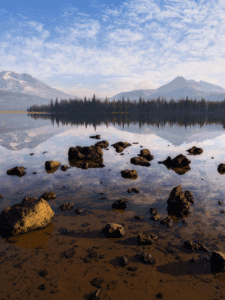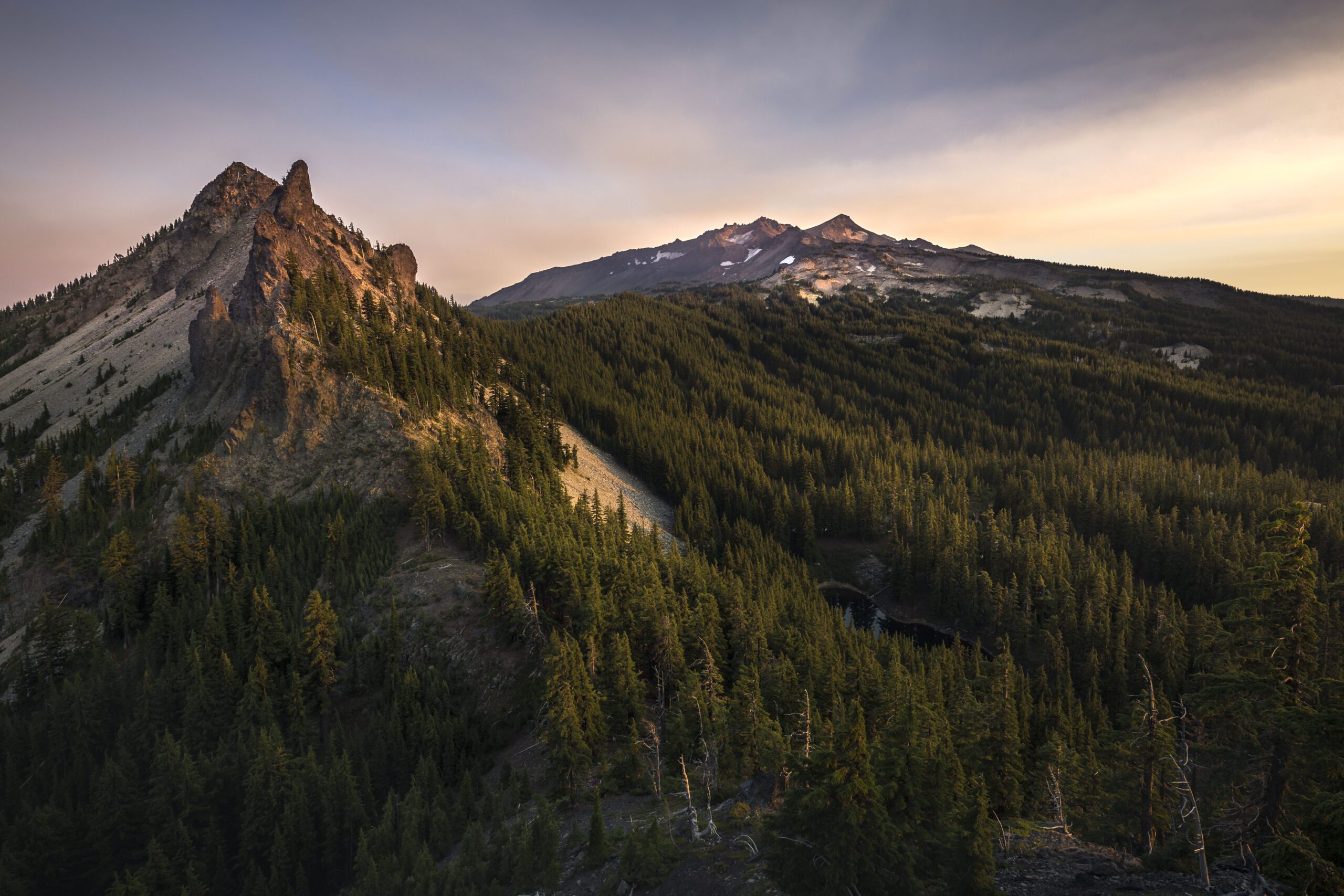When conservationists use the word “Wilderness” it usually means one of two things – either a wild and unspoiled area, or public land that has been protected under the Wilderness Act.
Wild, unspoiled places are a precious – and vanishing – part of Oregon’s natural heritage. The word “wilderness” derives from the notion of wildness and wild places – areas that are not controlled by humans. The word is derived from an Old-English term wildeornes, which means “place of the wild animals.” Wilderness does not mean a place where humans never go, or a place that humans have never had an effect upon. It simply means a place where nature is left to find its own path, without interference from logging, roads, development, dams, etc.
Wilderness can be a pristine forest, or it can be an area that has recovered from historic logging. It can be a vast landscape of desert sagebrush and lava rock, or it can be a few thousand acres of old-growth trees.
Whatever their size or location, wild, unspoiled places offer our families a glimpse of the world as it was before Interstate Highways, chainsaws, and traffic jams. In wild places, Americans can still find freedom, solitude, and adventure.
Federally protected Wilderness Areas are places that have been set aside by Congress in order to permanently protect their unspoiled character. The 1964 Wilderness Act provides the foundation for these safeguards. Wilderness designation protects the public’s ability to enjoy activities like hiking, camping, whitewater boating, horseback riding, hunting, and fishing while at the same time protecting land from destructive logging, mining, road building, and other forms of development.
The Act defines Wilderness as:
- “…lands designated for preservation and protection in their natural condition…” Section 2(a)
- “…an area of undeveloped Federal land retaining its primeval character and influence, without permanent improvement or human habitation…” Section 2(c)
- “…generally appears to have been affected primarily by the forces of nature, with the imprint of man’s work substantially unnoticeable…” Section 2(c)
- “…has outstanding opportunities for solitude or a primitive and unconfined type of recreation…” Section 2(c)
- “…shall be devoted to the public purposes of recreation, scenic, scientific, educational, conservation and historic use.” Section 4(b)
What’s allowed in a Wilderness area?
This list is not comprehensive. Hiking, hunting, fishing, camping, canoeing, kayaking, rafting, trail running, bird watching, picnicking, xcountry skiing, snowshoeing, and more. Just make sure to leave your chainsaw and bulldozer at home.



